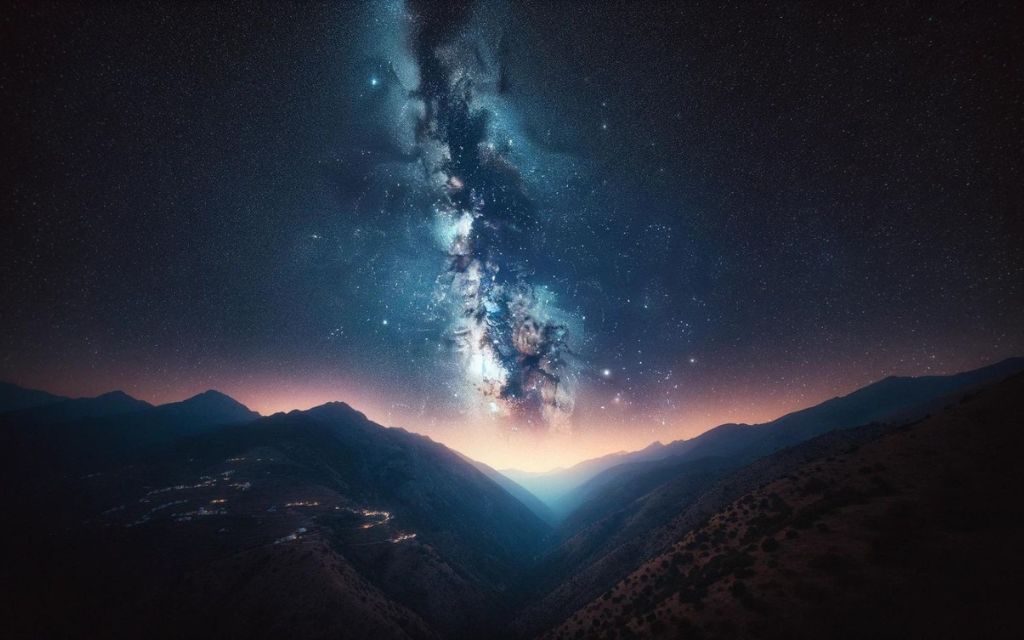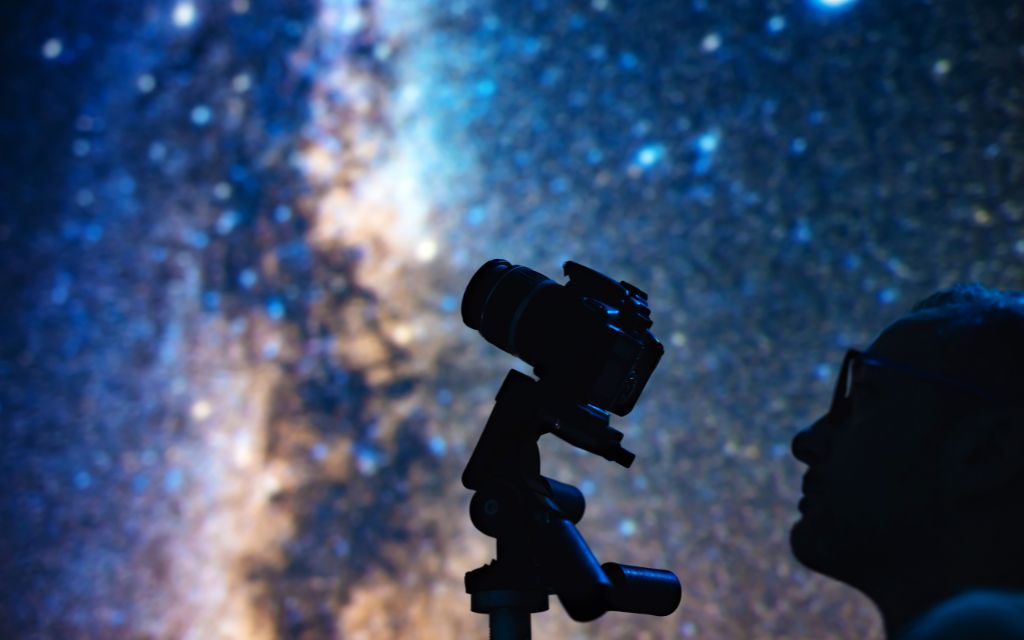Imagine escaping the city’s hustle and bustle, where the only lights competing with the stars are the gentle glows from quaint village homes. Casa Redonda offers just that – a sanctuary for those who seek the serene beauty of the night sky. Here, away from the glare of urban life, the heavens unfold in all their splendor, inviting you to partake in the timeless practice of stargazing.
The Allure of Andalusia’s Night Sky
Competa’s sky is a canvas that captures the imagination, where the Milky Way spills across the expanse like a river of diamonds. The absence of significant light pollution allows for a clarity and depth of view that is increasingly rare, presenting an opportunity to connect with the cosmos in a way that has fascinated humanity throughout history. On any given night, the sky above Casa Redonda is a live show of twinkling stars, planets in motion, and the ethereal glow of distant galaxies.
Best Times for Stargazing
Timing is everything when it comes to stargazing. The dark, moonless nights of new moons provide the perfect backdrop for deep sky observations, while the annual Perseids meteor shower in August turns the sky into a breathtaking fireworks display. Each season brings its own celestial highlights, from the Orionid meteor shower in autumn to the bright constellations of winter, making Casa Redonda an all-year-round stargazing destination.

A Guide to the Constellations
The night sky is a map, ancient and ever-new, dotted with constellations that have guided humanity for millennia. Each group of stars tells a story, be it from Greek mythology, Arabic folklore, or the many cultures that have named them.
Orion the Hunter: One of the most recognizable constellations, visible in the winter sky. Look for three stars close together in an almost straight line – these are Orion’s belt. From there, you can spot the brighter stars Rigel and Betelgeuse marking his foot and shoulder, respectively.
Ursa Major and Ursa Minor: Also known as the Great and Little Bears, these constellations are home to the Big Dipper and Little Dipper. The Big Dipper is part of Ursa Major, and its “pointer” stars lead directly to Polaris, the North Star, which is part of Ursa Minor.
The Zodiac Constellations: These constellations lie along the ecliptic, the path the sun takes across the sky. They include Aries, Taurus, Gemini, and so forth, each associated with a time of year. Observing them can connect you to the rhythm of the Earth’s journey around the sun.
Photographing the Night Sky
A DSLR or a mirrorless camera with manual mode capability is ideal for astrophotography. Lenses with wide apertures (f/2.8 or wider) are preferable for capturing as much light as possible in a short exposure time. A sturdy tripod is a must to stabilize your camera for long exposures, and a remote shutter release or a camera with a built-in timer can help avoid camera shake when taking pictures. That said, the cameras and software on modern mobile phones have improved dramatically in recent years, and you might be surprised by the results you can achieve with just your phone and a steady hand.
Start with manual settings to gain full control over your exposures. A good starting point is to set your aperture as wide as possible, your ISO between 1600 and 3200 (depending on your camera’s noise performance), and your shutter speed around 20 to 30 seconds to avoid star trails unless that’s the effect you’re going for. Adjust these settings based on the scene’s light and desired outcome.
The composition is key in astrophotography. Include elements of the landscape to add interest and scale to your shots. Trees, mountains, or even the silhouette of the village can create a compelling foreground that contrasts beautifully with the night sky.
Achieving sharp focus on the stars can be challenging. Switch to manual focus and use live view mode to zoom in on a bright star or a distant light. Adjust the focus until the star or light is as small and sharp as possible.

Summary
Stargazing at Casa Redonda is more than an activity; it’s an experience that touches something deep within us. It’s a reminder of the vastness of the universe and our place within it. As you gaze up at the night sky from our terrace or garden, let the stars fill you with wonder and inspire dreams that reach beyond the horizon.
